Smell is probably the oldest sense, hardwired right into our brains and closely linked to memory. Now researchers are trying to unravel the complex genetics that underpin it. Plus, contagious dog genital cancers, gene therapy for blindness, and a rather slimy gene of the month.
In this episode
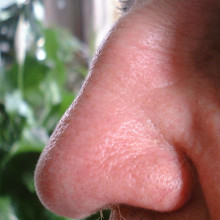
01:02 - How do I smell?
How do I smell?
with Prof Stuart Firestein, Columbia University
Kat - We all know the old joke - my dog's got no nose! How does he smell? Terrible! Cheesy jokes aside, smell is one of the keys ways humans and other animals sense the world around them. Stuart Firestein, Professor of Biology at Columbia University in New York explained to me how our sense of smell works, and why it's so important.
Stuart - So it's quite a remarkable sense to begin with. One that in humans, we underestimate. There's generally this idea, I think, that people have less of a sense of smell or less dependence on smell than many other animals, that were not as good at it. Actually, that's not quite true. We're quite good at smell. When you test this carefully, the biggest problem with our sense of smell it turns out, in fact, is that we walk on two legs, so our noses are about five feet up in the air here and all the good odours are down within a few inches to the ground. That's why dogs put their nose right to the ground when they catch a scent.
But you know that we have a very good sense of smell because we use it in the sense of flavour, which is different from taste, sweet, sour, salt, bitter, but everything else is flavour and that's about 80% olfaction. And that's because when we put food in our mouth and we crush it, we send it up what's called retronasal pathway, the back of our throat, where it impinges very closely now on the olfactory receptors which are in our nose.
Kat - And what do we know about these olfactory receptors? How do they work? And what genes are involved in the sense of smell?
Stuart - Yes, they're quite remarkable as it turns out as well. So first of all, we smell a large number of molecules - hundreds of thousands conceivably. I mean, we know of many, many thousands and then there are new smells that pop up every day, you know, like, new car smell. I mean, it's a very clear smell, but we clearly haven't evolved something for that, so we can put blends together. So there are many, many smells. They're all small organic molecules.
And there are now a large number of receptors - these are these little proteins that sit in the membranes of the sensory neurons that are way up in the top of our nose. Those sensory neurons have these proteins in their membrane that bind to these odours much like a lock and a key mechanism, and then when they bind to these receptor, it depolarizes the cell, which they changes the cell's voltage, electrical characteristic, and that signals the brain that this receptor has located a particular molecule which is now an odour. And the brain somehow or another now interprets that to be a banana or a pear or a pile of dung or whatever it might be that the chemical is coming from.
The receptors themselves were first discovered as a large gene family by Linda Buck and what was remarkable about the discovery that made it worth the Nobel Prize perhaps is that it turns out to be an extremely large family of genes. Indeed, the largest family of genes in our genome.
Kat - How many are we talking about here?
Stuart - Well, so in most mammals, we're talking about something in the range of a thousand genes. To put that in some perspective, we now think having sequenced the whole human genome that the typical mammalian genome is maybe 25,000 genes. So now, a thousand of them are devoted to your schnozzola here, your nose, you know, that's remarkable. That's 2 per cent of your genome, between 2 and 5 per cent of your genome devoted to your nose. So in humans, it's a little bit lower in number. We actually have the thousand genes in our genome, but about half of them seem to be what we call pseudogenes, which means they've mutated in such a way that they are no longer, probably capable of making a functional protein, and so we get by on, let's say 500. And the next largest family of these receptors are the ones for serotonin, very important to psychological illnesses and things like that. And in the serotonin family there are 15 genes.
Kat - Wow!
Stuart - So compared to 500 for odour receptors or a thousand if you're a mouse.
Kat - So, what do we know about how cells in the nose choose which odour receptor that they're going to go with? How do they choose which one to switch on?
Stuart - Yes. This is probably the biggest question in the field right now. It's a remarkable observation that we know, but we have no idea what the mechanism is. So the observation is that each sensory neuron - you have about 10 million of them in this little tissue at the top of your nose - each one of these sensory neurons goes through the genome somehow and picks one of those genes and all of the proteins that it makes, which are millions of receptors are made from that one gene.
So, each cell is devoted to one particular receptor and therefore one set of odours, whatever odours that receptor binds. Not only are they - we say then monogenic, that they've picked on gene from, let's say the thousand possible genes that are spread all over the chromosomes. They're located on virtually every chromosome. So somehow or another, the cell has picked one gene. It's remarkable that mistakes don't seem to get made. I mean, a cell really does seem to pick this one gene and express all of its receptors off of that gene for its entire lifetime.
Kat - What do we know so far about what's controlling that choice and how these decisions are made and how the genes are picked and switched on?
Stuart - Almost nothing. Actually, I could say nothing. We could leave the almost out. There have been many theories. We've tried many things. Many laboratories have tried many things, but we haven't really got a very good handle yet on precisely what it is that was controlling them. It's taught to be probably some feedback mechanism. We do know this: if a cell chooses a pseudo gene one of these genes that's no good, that doesn't make a good protein, it will turn that off and go back and pick another one and then presumably, continue doing that until it finds a gene that makes a good protein and does so.
So the thought is, well, it must have something to do with the functional protein and then some feedbacks that says to the cell, "Okay, you found a good protein, turn off your gene choice mechanism and stop whatever you're doing, just make this protein." But we've never found that signal. So, the answer really is we don't know. There are lots of ideas, but we still don't know. It's a big question.
Kat - It seems a very, very mysterious sense. What do you still really want to know about it?
Stuart - Still, there are quite a few mysteries about it, that's true. We don't know really why it has such a strong effect on memory. The wiring in the brain is a little bit - is a bit unusual, I will say for a sensory system. It doesn't go through a piece of the brain called the thalamus, which all other sensory systems do. We don't know what that means. I'm just stating a simple anatomical curiosity. We have no idea if that's meaningful or not meaningful or anything.
The memory business is quite curious. It, I should point out that the memories that are revoked by olfaction always have a strong emotional content, so you remember the first day of school or first lover or the last lover, or something like that, you know? Or you are at grandmom's house, but it's not like you smell something and remember a page of text or an equation or something useful.
Kat - Unfortunately, yes.
Stuart - That's right. That doesn't seem to work, so there are always these emotionally tainted or strongly emotional memories. Now, we're not quite sure what that means either, but that's an observation that we find with them. They certainly govern a great deal of our feelings about things in very subtle ways often. I mean, people are always interested in pheromones and things like that, something you can spritz on yourself and you'll become super attractive.
But I will say, for example, that olfaction can have very strong negative effects in interpersonal relation. So you can meet somebody, find them quite attractive physically. Then you talk to them and now they're even more attractive intellectually and socially and all the rest of that. And then you finally, kind of, get up close to them, you know, for the first kiss or something and they have some off odour and that's it.
Kat - Yes.
Stuart - It's over, right? And you'll never get past that.
Kat - Yes.
Stuart - I don't know care how good all the rest of the stuff is, you just won't get past that. So we're very strongly attuned to that sort of thing, for sure.
Kat - That's what you'd like to unravel, the scent of a woman.
Stuart - Yes. That would be fabulous, and put it in a bottle.
Kat - That was Professor Stuart Firestein from Columbia University.
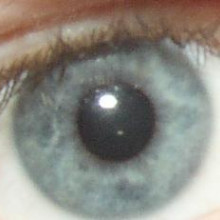
09:16 - Gene therapy for blindness
Gene therapy for blindness
with Nell Barrie
Kat - Now, the first story I wanted to talk about was a really exciting but a very small clinical trial of gene therapy for a particular type of blindness. What have the scientists done here? This is really exciting.
Nell - Yes. This is really cool, especially because I remember learning about gene therapy back at school many years ago and being told, "Yes, this is the future in 10 or 15 years. We're going to be treating all kinds of diseases using gene therapy." As we know now, it's proved a lot more difficult than that for a lot of complicated reasons. This is really small trial with six patients, looking at a condition called choroideremia and it's a type of progressive blindness caused by faulty gene called CHM. And what the researchers are actually doing is using a viral vector, so a virus, to introduce a new section of DNA into the eye.
Kat - And the results seem quite promising. What have they found so far?
Nell - So, yes, it does look really exciting. They've actually found that people's vision did get better. It's not a kind of immediate, "Oh my God, I can suddenly see again." They looked at the acuity, so the kind of acuteness or the clearness of these people's vision, which is what they measure when you're looking at those little lines of text on the sight charts at the opticians. I'm very bad of this because I'm very short-sighted. And they found that that acuity did go up. And also, patients were able to see better in the dark so you're getting some real benefits here, but it's really important just to emphasize that this is a phase one trial, so all they were trying to find out was whether this was a safe way to use this treatment.
So it's promising they've got these results, but they need to do bigger studies before they can find out whether this is really going to help. The researchers think that it could help with age-related macular degeneration, which is actually pretty common and that makes about 300,000 people blind every year in the U.K. So, it's definitely possible that if we can spot these kinds of things earlier on, if we know that we can treat them out in earlier stage, then it could really be a useful way to stop people from getting to the point where they start to lose their vision in the first place, which should be great.

11:16 - Dog genomes reveal their history
Dog genomes reveal their history
with Nell Barrie, writer
Kat - Now regular listeners will know I love my dog genetic stories. And this is a big one. This is a big study published in PLOS Genetics from researchers in the U.S, Europe, and China. And what they've been doing is analysing, basically, the evolutionary history of dogs and wolves. So they've been doing genome analysis on three grey wolves - one from China, Croatia and Israel and a whole bunch of domesticated dog breeds. So there's a Basenji, which originated in Central Africa and a Dingo from Australia. And the results are really intriguing. What's your take on this?
Nell - Well, I just want to caveat this by saying I'm a cat person, but, you know, dog studies are interesting. What they found was that the dog breeds that they sequenced were most closely related to each other. So, the dogs were more closely related to each other than they were to any of the wolves, which is not too surprising, given that we know that wolves are quite different and they diverged a long time ago. But what really came out of this, it's almost winding back the clock using these genetic changes to sort of go back in time.
And it's actually, surprisingly or perhaps not a lot more complicated than we thought because it appears that there may have been different wolf lineages diverging away and starting to evolve into dogs in different places at different time. So, there appears to have been a lot more merging and diverging going on than we thought. It's not a simple as saying that we had a population of wolves, dogs start to evolve and then two lineages just split because there may have been some sort of overlap at different points in time.
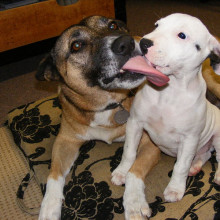
12:47 - Contagious dog cancer analysed
Contagious dog cancer analysed
with Nell Barrie
Kat - One other thing that's interesting and exciting, but also actually quite icky is the story that's coming out this month about this contagious dog genital cancer. And this was a research from Elizabeth Murchison at the Wellcome Trust Sanger Institute and published in Science.
She's well-known for working on the other known transmissible contagious cancer, which is Tasmanian devil facial tumour, which the devils transfer by biting each other. And now, this is a dog genital cancer that can also be transferred. What has she discovered about this?
Nell - Oh, yes, it's kind of horribly fascinating, you know, you get a headline like "11,000-year-old genital cancer" and you can't help but read on.
Kat - Eww!
Nell - So what they're looking at is it's a tumour. It's a transmissible tumour, so it arose in one dog - we think about 11,000 years ago - and it's been going ever since, which is amazing and a really interesting example of what can happen as cancers evolve. And the researchers have looked at all the genetic mutations within it. It has about 2 million, which is a huge number compared to a lot of human cancers, which might have around a 1,000, maybe up to 5,000 mutations.
So, I guess, the really interesting question is how on earth does it survive with all of these mutations, causing it to go wrong in all kinds of interesting ways? And they've actually have been able to look back and figure out what type of dog it arose in. And then I think it was something like an Alaskan malamute or a husky maybe, with a short straight coat - grey, brown, maybe black colouring. They can't tell if it was a male or female though, from what they've got at the moment.
Kat - It is really, really fascinating stuff. A real bit of genetic archaeology. And they are proposing that the genetic variations that they're seeing in the tumours from around the world suggests that it started to spread globally about 500 years ago, during the dawn of the age of exploration. So all these sailors are off conquering the New World, taking these dogs with genital tumours with them. It's not a very nice idea.
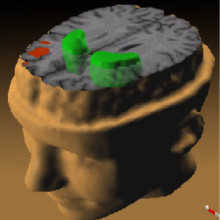
14:41 - Genes and schizophrenia
Genes and schizophrenia
Two papers in the journal Nature this month from US researchers have pinpointed new genetic variations linked to the psychiatric disorder schizophrenia, which affects roughly one in every 100 adults. In the first study, scientists compared gene sequences from 2,500 people with schizophrenia, and compared them with DNA from the same number of unaffected, similar people. Meanwhile, the second study focused on so-called 'trios' - a person with the condition and their unaffected parents - looking for new faults in the affected person that aren't there in their parents.
Both studies confirm what's been previously suspected - that schizophrenia is due to a complex combination of variations in many genes, and isn't just due to one specific gene fault. This suggests that any two people with the condition may have different genetic 'signatures'.
However, the findings reveal that most alterations tend to cluster within a few specific biological pathways, such as genes involved in nerve function and brain development, bringing a deeper understanding of the biological processes involved in the illness and opening up avenues for potential future treatments.

15:50 - Sequencing the coral community
Sequencing the coral community
Writing in the journal PLOS ONE, Japanese researchers have analysed the genetic information in a whole coral community - including the corals themselves, and the algae and micro-organisms that live on them.
Corals are made up of many hundreds of tiny little animals called polyps, which are glued together with a hard cement. Over time, this 'skeleton' builds up to produce the hard coral reefs you can see in the sea. Focusing on a coral called Porites australiensis, the scientists managed to assemble thousands of genetic sequences from the coral and its passengers, including an algae called Symbiodinum. They discovered that the algae was providing the coral with key amino acids - the building blocks of proteins - which it couldn't make itself.
Coral reefs are under threat around the world as a result of human activity and climate change, so understanding more about their genetics - and the genes in the organisms that live on them - is a crucial piece of efforts to preserve these incredible habitats.
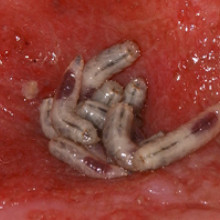
17:00 - Scent of a maggot
Scent of a maggot
with Matthew Cobb, University of Manchester
Kat - It's not just mammals like humans and dogs that need to sniff out the world around us. At the University of Manchester, Professor Matthew Cobb and his team are studying how maggots smell things. But what does a maggot need to smell anyway?
Matthew - If you are studying houseflies, then they are probably going to want to smell things like ammonia that are from decaying meet or poo and stuff like that. I study fruit flies and so the clue's in the name, they're interested in decaying fruits. So they are very sensitive to things like alcohols, which are produced by the yeast that's living on the fruit and to the various compounds you get coming off for both decaying and living fruit.
Kat - And what do we know so far about how maggots actually do smell things?
Matthew - Well, we know in principle their sense of smell is like ours and that each of their smell cells has got just one kind of receptor on it. We would generally argue that the sense of smell is the oldest sense evolutionarily, so it goes way, way back to when we were just blobs of cells, small multi-cellular organisms swimming around the sea. Organisms would need to be able to detect chemical gradients to need to be able to orient themselves, to detect prey or to detect predators.
Now, we know that much and then it all starts to get very hand-wavy and people aren't quite so sure about how it exactly works. What we know is that each smell can activate more than one kind of receptor.
Kat - And there were loads of different smell receptors, aren't there, in many species.
Matthew - The reason why we use maggots is they only got 21. They've got 21 smell cells. You've got about 4 million smell cells, maggots got 21. A dog, despite what people think about dogs having very, very good sense of smell in terms of the number of cells is very, very similar. The number of kinds of cells is very, very similar - about 400, 500. A chicken has got about the same. The question is how sensitive is our cells and how many copies of each kind of cell do you have. My maggots have got just 21 and each of those cells is unique - each one is different.
So you've got a very, very low level of organization. They're not terribly sensitive to the amount of smell. They're very poor at smelling because they've just got one kind of cell that's able to detect each range of odour. So, each cell can detect more than one odour and each other can be detected by more than one kind of cell. So you've got this complicated kind of interaction between a number of cells and a number of odours, which means that each odour will produce a specific pattern of activity in the neurons in the smell cells and then in the brain where it's actually start - gets turned into reception.
Kat - How do you go about in the lab testing what your maggots are attracted to, what they can smell and then what you can find out about their smelling system?
Matthew - We've got two ways of doing it. The simple way, which is the way I like because it's easy, is you get a load of maggots, you put them on a plate of agar, which is a hard jelly. You put the maggots in the middle. You put a smell on one side. You put the lid on. And you wait five minutes. And you see where they've gone because the maggots are going to wriggle about. And if they like the smell, they'll go towards it and you can simply count how many are on each side and you come up with a little index. So that's the simple way, simply to watch them.
The complicated way and incredibly delicate way is to get an electrode and put it into the maggot's nose. These very, very thin glass electrodes are put inside the maggot's nose and then you can blow a smell over it and you get an electrical signal, which corresponds to what that particular cell is doing. And because we're studying Drosophila, the maggots we're looking at are Drosophila, which is a geneticist's friend and really helps to establish the science of genetics in the 20th century. You can do all sorts of very strange things with them, so we can make a maggot which has no smell cells at all, no functioning smell cells and then by using the power of Drosophila genetics, it's relatively easy to allow just one particular kind of the - one of the 21 cells to express all the things that it needs and then to work.
So we end up with a system, which has got one cell working and 20 other cells that don't respond to any odour at all. So we can then, one see what the electrophysiological response is of what the neuron is actually doing and then get some insight into what the brain thinks that means. So for example, often, if you got a receptor that has got a very broad spectrum, so this is a neuron that can be activated by lots of different odours, if you blow an odour over that receptor, you get a very strong electrical signal. But when you put that maggot onto our little arena, and you give it the smell, it's not actually interested. It doesn't do anything.
So, you're getting a very strong signal in the brain, the brain can "see something", but the maggot doesn't show any behavioural response. It must have in its brain and therefore ultimately in its genes, a pattern of activity that it expects to have meaning. And if we can fool it by giving it something that has no biological meaning then it - well, if it had shoulders, it would shrug them and it just potters about.
Kat - Why the maggots actually need to smell? Because you'd think they'd be laid onto a piece of rotting banana by the fruit fly. Why do they actually need to smell anything? They don't go that far.
Matthew - Well, we don't know. A simple answer, we don't know. The vague explanation we have is well, what if they fell off? So, exactly as you say a maggot is laid as an egg on to a piece of rotting fruit or whatever it lives on. Why would they want to be able to smell? But what if they fell off the fruit, how do they find their way back? I have no idea if that's actually real. We know that maggots that don't have a sense of smell are much less likely to survive, which is kind of obvious because they can wander off the food and then they can't find their way back.
To be more serious, perhaps the reason why a maggot has a sense of smell is that the adult has a sense of smell. So, one of the things that we're interested in is whether a fly can remember what it knew when it was a maggot. And there've been a number of contradictory results about this. In ecological terms it's known that many insects will either go on to the food on which they were reared or in some cases, in the case of parasitoid wasps, will avoid the food upon which they were reared. So, there's plenty of evidence that there can be some kind of transfer of information.
Where that information is encoded is a big debate. It may be in the brain. It may be in the outside of the pupa that the insect forms before it turns into an adult insect. But there is certainly a lot of ecological evidence that insects are actually remembering in some way what they knew as a maggot, so maybe that's why maggots have a sense of smell because flies need to have a sense of smell and they need to be able recall stuff that they've learned at an earlier stage.
Kat - That was Professor Matthew Cobb from the University of Manchester.
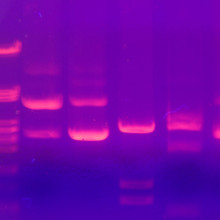
How does the polymerase chain reaction work?
Kat - And now it's time for our monthly question. Listener Randy asks, "The Polymerase Chain Reaction - how does it work?" To answer, here's Dr Sarah Hazell, senior science information officer at Cancer Research UK.
Sarah - The Polymerase Chain Reaction, or PCR was dreamed up in the 1980s, primarily by a scientist called Kary Mullis, and is an absolutely fundamental tool in any molecular biology lab. It's a way of making many copies of short stretches of a specific piece of DNA or RNA, like a particular gene, so it can be studied easily.
To do you polymerase chain reaction, your PCR, what you need is your target - such as DNA containing the gene that you're interested in. Then you need two primers - these are very short stretches of DNA that match each end of your gene - and an enzyme called DNA polymerase. DNA polymerase is found in all living cells, as it's the enzyme responsible for copying DNA when a cell divides. For PCR, scientists use a polymerase from a type of bacteria that lives in boiling hot thermal vents in the sea. The reason why they use that enzyme will become clear in a minute.
To do the PCR reaction, you mix your DNA, primers and polymerase, along with the chemicals that the polymerase needs to build new DNA in a very small, thin plastic test tube. Then you put it in a machine called a thermal cycler, which can quickly hit and maintain particular temperatures. To start with, the mixture is heated up to about 95 degrees centigrade - just below boiling - to separate the strands of the DNA. This is why you need the special polymerase, as regular enzymes would be ruined by heating them to this temperature. Then it's cooled down to about 50 to 65 degrees, which allows the short primers to find the particular gene they match. Then the temperature goes up to about 70 degrees or so, which is the temperature the DNA polymerase works best at. It then copies the DNA, starting from the primers. Importantly, the polymerase can only copy DNA where a primer has matched up, so you only get a copy of the particular gene you're interested in. Then the whole thing is heated up to 95 degrees again so the newly-made strands of DNA separate from the template, then the cycle starts again. But this time, because there's a bunch of newly copied DNA that also matches the primers, the primers stick to this too, so copies get made from the copies, as well as the original template. This very quickly builds up to hundreds of thousands of copies over a few cycles - usually about 30 - creating a relatively large amount of DNA in a short time. It's a really clever idea, and one that completely changed molecular biology. No wonder Kary Mullis won a Nobel Prize for it, although it was really a team effort with several people contributing to its development along the way.
Kat - Thanks to Dr Sarah Hazell for that answer. And if you've got any questions about genes, DNA and genetics, just email them to me at genetics@thenakedscientists.com.
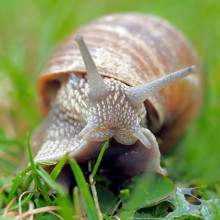
27:49 - Gene of the month - Escargot
Gene of the month - Escargot
with Kat Arney
And now, it's time for Gene of the Month - Escargot. Found in fruit flies and named after the French word for snail, but also known as the less exotic Fleabag, the protein encoded by the Escargot gene is what's known as a transcription factor, responsible for turning other genes on and off. It was found back in 1992, and was named because it's very similar to another fruit fly gene called Snail.
In flies, Escargot plays a number of different roles in a growing fly embryo, and is involved in the development of breathing tubes, called trachea, wings, reproductive organs and nervous system. Amusingly, for biologists anyway, the human version of Escargot is called Slug, and seems to be involved in the development of the brain and limbs. There's also growing evidence that it may be involved in cancer too.
- Previous David Willetts Speech to the AAAS
- Next NAKED at the AAAS










Comments
Add a comment